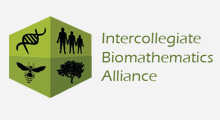Abstract
In this manuscript, we describe the process of using agent-based modeling in NetLogo to create a simulation of COVID-19 spread in a traditional college classroom. The model allows for an evaluation of different preventative measures implemented by the University of Pittsburgh, including the cohort classroom attendance model, mask and vaccine mandates, contact tracing, and classroom sanitation. Through the use of the model's interactive interface, the impact of adjusting specific measures by the institution could be visualized, providing a valuable tool for combating diseases that spread through droplet transmission.
Recommended Citation
Talwar, Saharsh and Yust, Anne E.
(2023)
"An Investigation of Mitigation Measures on the Spread of COVID-19 in a College Classroom Using Agent-Based Modeling,"
Spora: A Journal of Biomathematics: Vol. 9, 60–68.
DOI: https://doi.org/10.61403/2473-5493.1086
Available at:
https://ir.library.illinoisstate.edu/spora/vol9/iss1/7


